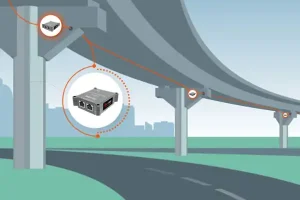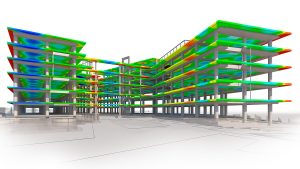In the rapidly evolving world of civil engineering and infrastructure management, ensuring the safety, durability, and performance of structures like bridges, buildings, tunnels, and dams has become paramount. Traditional methods of periodic manual inspections, while essential, often fall short in providing continuous and accurate insight into structural integrity. This gap has been bridged by Structural Health Monitoring (SHM) — a sophisticated system leveraging smart sensors and digital technology to monitor structures in real time, enabling early damage detection and data-driven maintenance.
In this comprehensive guide, we’ll explore the foundations of SHM, the types of smart sensors used, their benefits, applications, challenges, and the exciting future trends shaping the next generation of structural monitoring.
What is Structural Health Monitoring (SHM)?
Structural Health Monitoring is a method of using sensors, data acquisition systems, and analytical tools to observe the condition of a structure continuously or at predefined intervals. The system collects data on structural responses such as strain, vibration, displacement, temperature, and environmental factors to detect damage, deterioration, or unusual behavior.
By integrating smart sensor technology, SHM shifts infrastructure management from reactive to proactive. This transition allows engineers to anticipate failures, optimize maintenance schedules, and extend the service life of critical structures, ultimately enhancing safety and reducing costs.
Types of Smart Sensors Used in SHM
Smart sensors are the eyes and ears of SHM systems. Their capability to convert physical changes into electrical signals makes them indispensable in monitoring structural health. Below is a detailed overview of the most common sensor types and their roles:
Accelerometers
Accelerometers measure acceleration forces and vibrations. They play a vital role in detecting dynamic responses of structures due to wind, traffic, seismic activity, or machinery. By monitoring changes in vibration signatures, engineers can identify stiffness loss or cracks.
Example: The Akashi Kaikyō Bridge in Japan uses accelerometers to monitor oscillations caused by typhoons and traffic loads.
Strain Gauges
Strain gauges measure deformation (strain) under load. These sensors are often bonded to critical points like beams, columns, and trusses to track stress and detect overload conditions or fatigue.
Displacement Sensors (LVDTs and Potentiometers)
Displacement sensors such as Linear Variable Differential Transformers (LVDTs) measure minute movements or shifts in structural components. This helps in identifying settlement, tilting, or deformation.
Fiber Optic Sensors
Fiber optic sensors use light signals to measure strain, temperature, and crack propagation over long distances. Their immunity to electromagnetic interference and lightweight nature make them ideal for harsh environments and large-scale installations.
Wireless Sensor Networks (WSNs)
WSNs consist of spatially distributed wireless sensors that communicate data to a central system. They enable easy installation in remote or difficult-to-access areas without the need for extensive cabling.
Temperature and Humidity Sensors
Environmental sensors help monitor conditions that influence material behavior. Temperature fluctuations cause expansion and contraction, while humidity can accelerate corrosion and material degradation.
Acoustic Emission Sensors
These sensors detect transient elastic waves generated by crack formation or growth within materials. They are highly sensitive and useful for early detection of microcracks in concrete and composites.
Benefits of Real-Time Monitoring Using Smart Sensors
Adopting smart sensors in SHM systems delivers a wide range of benefits that contribute to safer, more efficient infrastructure management:
Early Damage Detection and Prevention
Real-time data allows for early identification of structural anomalies like cracks, excessive vibration, or unusual displacement. Early detection reduces the risk of catastrophic failures and enables timely repairs.
Cost Reduction in Maintenance and Inspections
Continuous monitoring reduces the frequency of manual inspections, lowering labor costs and minimizing disruption to traffic or building occupants.
Enhanced Safety for Users and Workers
Monitoring critical infrastructures like bridges or tunnels ensures potential hazards are identified before posing risks to public safety.
Extended Lifespan of Structures
By addressing damage early and optimizing maintenance activities, structures can remain functional longer, providing better return on investment.
Support for Data-Driven Decision Making
Historical sensor data combined with predictive analytics provides engineers and asset managers with actionable insights, facilitating strategic planning.
Environmental Sustainability
Optimized maintenance schedules reduce material waste and energy consumption related to unnecessary repairs or premature replacements.
Applications in Bridges and Buildings
Smart sensors have found extensive applications in various types of infrastructure. Below are some notable examples:
Bridges
Bridges are among the most critical infrastructures requiring continuous monitoring due to their exposure to heavy traffic, environmental forces, and aging.
- Golden Gate Bridge, USA: Uses an extensive array of accelerometers, strain gauges, and displacement sensors to monitor dynamic responses and structural health.
- Forth Road Bridge, Scotland: Incorporates fiber optic sensors to detect strain and temperature variations over long spans.
- SMART Bridge Project, South Korea: Employs WSNs and AI algorithms to assess structural integrity in real time.
Buildings
High-rise buildings face challenges from seismic activity, wind loads, and material fatigue. SHM systems in buildings monitor sway, foundation settlement, and vibration levels.
- Taipei 101, Taiwan: Uses a massive tuned mass damper combined with accelerometers and displacement sensors to reduce sway during earthquakes and typhoons.
- Burj Khalifa, Dubai: Implements strain gauges and accelerometers to monitor the tower’s performance under extreme wind and temperature variations.
Other Structures
- Historic Monuments: SHM helps preserve heritage buildings by detecting early signs of material degradation non-invasively.
- Dams and Tunnels: Sensors monitor water pressure, seepage, and deformation to prevent failures.
Data Analysis and Interpretation in SHM
The vast amount of data collected by smart sensors requires robust processing and interpretation techniques:
Machine Learning and AI
Machine learning algorithms can identify patterns in sensor data that human inspectors might miss. These algorithms detect anomalies, predict future failures, and classify damage severity.
Digital Twins
A digital twin is a virtual replica of a physical structure updated in real time by sensor data. Engineers use digital twins for simulation, testing repair scenarios, and optimizing performance.
Cloud Computing and IoT
Cloud platforms provide scalable storage and computational power for SHM data. Integration with IoT devices allows seamless data flow and remote monitoring through user-friendly dashboards.
Visualization Tools
Graphical interfaces and dashboards translate complex sensor data into actionable insights accessible to engineers, decision-makers, and stakeholders.
Challenges in SHM Adoption
Despite the promising advantages, several challenges hinder widespread SHM adoption:
High Initial Costs
Installation of sensors, communication networks, and analytical systems requires significant upfront investment, which can deter smaller projects.
Data Management and Security
Handling large data volumes demands efficient storage, transmission, and cybersecurity measures to protect sensitive infrastructure information.
Lack of Standardization
Diverse sensor types and manufacturers create challenges in data integration, calibration, and interoperability.
Sensor Durability and Maintenance
Sensors must withstand harsh weather, chemical exposure, and mechanical stresses while maintaining accuracy over long periods.
Skill Shortage
Effective SHM requires multidisciplinary expertise spanning civil engineering, electronics, data science, and software development, which is often scarce.

Future Trends in Sensor Technology for SHM
The future promises exciting innovations that will transform SHM systems:
Self-Powered and Energy-Harvesting Sensors
Sensors that generate power from vibrations, solar energy, or temperature gradients will reduce maintenance by eliminating batteries.
Advanced Materials and Nano-Sensors
Nano-scale sensors can detect molecular-level damage and material fatigue before macroscopic symptoms appear.
AI-Enabled Autonomous Monitoring
AI will automate anomaly detection, decision-making, and adaptive sensing strategies, allowing for smarter infrastructure management.
Integration with Robotics and Drones
Autonomous drones equipped with sensors can perform inspections and collect data in hazardous or inaccessible areas.
Standardization and Open Platforms
Developing universal standards for sensors and data protocols will simplify integration and promote industry adoption.
Conclusion
Smart sensors for Structural Health Monitoring represent a game-changing advancement in civil engineering and infrastructure management. By providing continuous, real-time insight into the condition of bridges, buildings, and other critical structures, SHM enhances safety, reduces maintenance costs, and extends service life. While challenges such as cost, data management, and skill gaps exist, rapid technological progress and growing demand for safer infrastructure will drive broader adoption.
For engineers, asset managers, and policymakers, embracing SHM and smart sensor technology is essential for building resilient, sustainable infrastructure capable of meeting the challenges of the 21st century.




